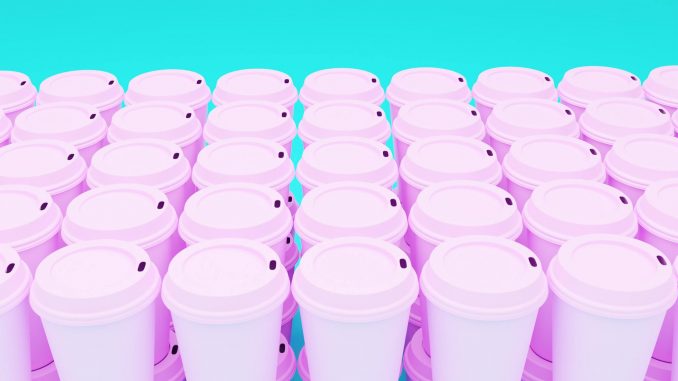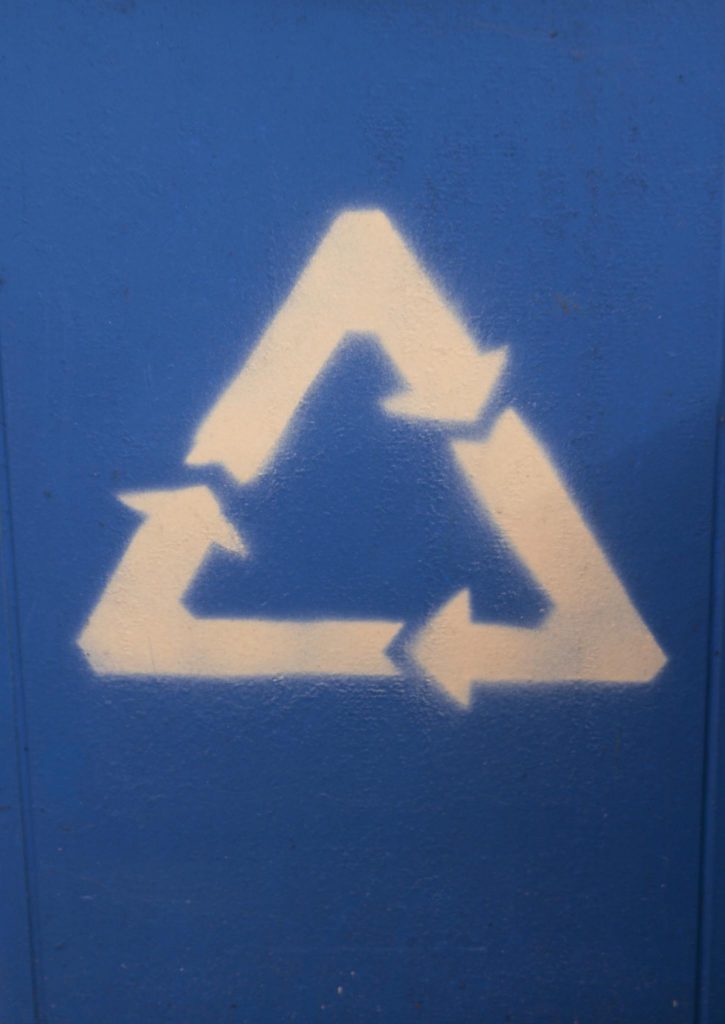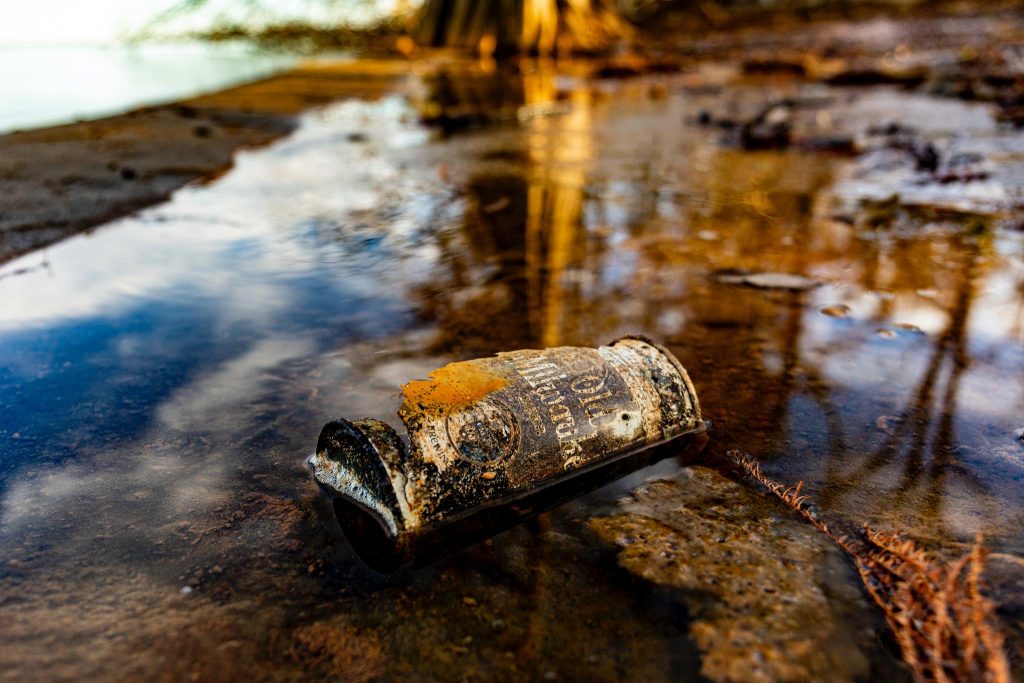
What are the positive effects of recycling and can there be negative impacts of recycling? Recycling is often thought of as the most successful and widely practiced environmental mass action in history. But is recycling really helping the environment? In this post I’ll investigate the pros and cons of the recycling movement.
This is an in-depth post but here is a busy citizen summary for you:
- Don’t Stop Recycling: If you take one thing from this post I hope it is this, just because there are problems with recycling, it does not give you the excuse to throw recyclable material straight in the trash can. The positive effects of recycling are real! Across every type of material, products made from recycled material emit significantly less greenhouse gases when compared to “virgin” products.
- Recycling is Promoted by Companies to Avoid Responsibility: Recycling, especially plastic, is often used as a subtle weapon against greater responsibility for companies producing mountains of plastic waste, most of which won’t be recycled (and they know it).
- Companies Have Not Been Honest about Recycling: Corporate lawyers have argued that average citizens sign a contract, albeit invisible and unspoken, when you buy something that makes people the responsible parties for disposal. Also, the swoopy little recycling arrows on plastic are basically a lie.
- Most Plastic is Not Recycled: The idea of plastic as a recyclable material is really not true in a broad sense, and the overwhelming majority of plastic produced is either buried, burnt, or shipped overseas to be sorted by really poor people in terrible conditions.
- Other Materials are Recycled at Higher Rates: Paper, cardboard, and especially metal are recycled at high rates, partly because it’s more economical.
Is Recycling a Vast Corporate Sham to Make You Feel Guilty?
One common argument about the negative impacts of recycling is that the whole enterprise is a little misleading.
You can convincingly argue that recycling is a scam. Basically, companies have off-loaded the cost of waste disposal onto the government – mostly localities, cities, states, and to you, the private citizen. Your local government is spending tons of taxpayer money to collect, sort, haul tons of waste from companies who sell us products, subsidizing their costs. In economic speak – we pay for their negative externality.
McBride, in her amazing book, Recycling Reconsidered, proposes that corporate interests have used recycling as a diversionary tactic. By keeping people focused on recycling, it distracts them from worrying about other questions, like why do I recycle glass but not all my old clothes, where does all this stuff go, etc. They have accomplished this in overt and more covert ways.
First, one of the less obvious negative impacts of recycling is the subtle seeding of guilt in our minds. The litter and recycling movements come with a strong dose of individual responsibility. Corporations, especially the plastic and chemical industries, have spent missions of dollars to frame plastic as a material that is recyclable despite knowing that it was not really true in the same way that most other materials are recyclable.
Also, for good measure, they sprinkled a bit of guilt on top of our national psyche to help ensure we don’t look towards them as the responsible parties. In How to Save a Planet’s recent episode on recycling, they describe how that famous commercial from the 70’s with the crying Native American (whose actor was actually Italian-American) was basically a highly successful marketing effort to place responsibility on consumers for companies’ waste.
The group that produced that commercial, Keep America Beautiful, is described as a “masterful example of corporate greenwash” by Elizabeth Royte, author of Garbage Land.
Would you Like A Copy of Your Secret Contract with That Cup of Coffee?
If guilt doesn’t work, companies deploy a less subtle strategy when faced with the possibility of taking responsibility for their waste: an army of lawyers and lots of money.
When government, citizen activists, and other groups have tried to make companies account for the negative impacts of recycling, namely the cost, manufacturers and the packaging industry have mobilized against any change in the status quo.
Companies get freaked out and hyperbolic when faced with any movement towards responsibility, like Pepsi saying a bottle deposit bill is like a communist plot in the 1980s: ”Look what happened in Russia, Germany and Cuba when governments had too much control.”
Or there is another strange tactic, did you realize that you were signing an invisible and unspoken contract when you buy that bottle of Coke or cup of coffee?
Companies have argued that a contract is created upon purchase and you have agreed to dispose of their product responsibly. According to McBride, this argument has been rolled out by companies to combat the idea that they have any responsibility for the waste they generate.
People may argue, yes, I bought it, therefore I should be responsible. But what if there is no “responsible” way to dispose of it and achieve the actual positive effects of recycling? Your only options are throw it in the trash bin where it will be buried and leach out poisonous chemicals for 500 years. Or, the salve for all us guilt-laden consumers out there, “I’ll recycle it! That means there is no harm done!”
Let’s dig into that one next (hint: your most responsible option might be to fill it with colored sand and put it on your mantle as tacky decoration).
Swoopy Little Arrows of Confusion
Let’s dig into that “I’ll recycle it” option for plastic. You might notice that all those pieces of plastic you bring home have a little number on the bottom with some swoopy arrows. To my brain, those arrows tell me that plastic will eventually be processed in some circular fashion, popping out transformed into a new thing-y made of plastic.

Bad news, they don’t mean what you think they mean. They do not mean they will, or even realistically can be recycled. According to NPR and Frontline, the oil and plastic industries lobbied to mandate those symbols starting in the late 80s, despite knowing they were not really recyclable from a practical perspective.
The term “plastic” is a misleading umbrella term for a very diverse set of materials, all with different characteristics and varying degrees of recyclability. Compare that with aluminum, which may be in different shapes but is still made of one material, aluminum.
The type of plastic that is used is the driving factor of whether it has a chance of getting recycled. PET, for instance, is highly recyclable, behaves like virgin material after getting recycled. But polypropylene or PP, otherwise known as that coffee cup lid you might throw in the recycling bin 365 times a year, that’s barely recyclable. Also, often one plastic container will actually be multiple types of plastic together, for instance caps of plastic containers are typically a different type of plastic.
This is troublesome since recycling, being a process that needs clean and consistent inputs for remanufacture, is fundamentally challenged by lots of slightly different materials. McBride points out, all those different little numbers on your plastic waste make for a very heterogeneous stream of material, driving up the costs of recycling.
The costs of recycling plastic detract from the positive effects of recycling. When costs get higher, it’s cheaper to put it in a landfill, burn it, or maybe, find some people to exploit, then pay them very low wages to sort it.
The Sustainable Packaging Coalition points out that using recycled plastic is generally more expensive for companies than virgin materials, it behaves differently during manufacturing and getting exact colors, important for branding purposes, is harder due to the mixing of slightly different materials and different colored plastics.
The Bad Bottomline: Big Problems with Recycling Plastic
I promise there is some good news about the positive effects of recycling later, but unfortunately I need to cover some more bad news about the negative impacts of recycling. The truth is, the overwhelming majority of trash is being buried or burned, certainly in the U.S. and “developed” countries, and likely at worse rates in poorer countries. Recycling, especially plastic, diverts a small percentage of waste for reuse and it has had a minor impact on the continued extraction of virgin materials from the planet.
The circular economy, especially for plastics, is very far from becoming a reality. There are various estimates out there about how much plastic actually gets recycled, but all of them are shockingly depressing.
The Center for International Environmental Law’s (CIEL) report Plastic & Climate: The Hidden Costs of a Plastic Planet estimates that 9 percent of plastic made since 1950 has actually been recycled. In 2015, the most recent year’s data, 75% of the plastic you conscientiously placed in the recycling bin got buried in a landfill, with only 10% actually being recycled.

The positive effects of recycling are real but the sheer magnitude of plastic is hard to overcome. Relying on recycling to take care of all the plastic we produce per year is like bailing out a sinking tanker with a coffee mug. And since we’ve been producing plastic for decades, that tanker is already a few leagues under the sea.
Finally, plastics are less recyclable in the sense that they cannot be recycled over and over forever, like aluminum. In most cases you will only be able to recycle plastic once or twice before it becomes unusable in terms of feeding a manufacturing process. Also, recycled plastic isn’t always used to make the same product again, but rather turned into something else, which isn’t really a circular process.
For instance, McBride highlights that in a report from 2008, the American Chemistry Council found that only 4% of the plastic bags collected for recycling actually were turned back into more plastic bags, with the overwhelming majority being shipped overseas, and the remainder that stayed in the U.S. turned into plastic lumber.
That is better than throwing it in a landfill or burning it, but short-circuits the utopian vision of a circular economy where we materials are in some infinite loop of reuse, saving on the greenhouse gas-heavy extraction and production process.
Plastic and Climate Change
Plastic is not just a trash problem. The production of plastic emits significant amounts of greenhouse gases into the atmosphere.
If recycling convinces people that plastics are somehow a sustainable material, this certainly can be considered one of the negative impacts of recycling.
The CIEL report highlights that in 2019 the production and burning of plastic emitted the equivalent of 189 large coal power plants. Unfortunately, if trends continue (and they are), those numbers will only get worse.
The amount of plastic produced each year is growing rapidly, estimated to grow by almost 4% a year for the next decade. CIEL estimates that by 2030, the cradle-to-grave emissions will represent the equivalent of 277 five-hundred-megawatt coal plants.
The Good News: Other Materials Get Recycled
Ok, don’t jump off that ledge just yet! The good news is other materials, besides plastic, do get recycled at pretty high rates. Aluminum and metal is recycled at high rates and according to the SPC, the demand is so high for used aluminum cans we actually import them from other countries.
Those beer cans you buy likely already include a good amount of recycled material, up to 70% of the material. Manufacturing recycled aluminum requires 95% less energy and produces 95% fewer greenhouse gas emissions than manufacturing virgin aluminum. Unfortunately, the EPA estimates that only about half of America’s aluminum cans actually get recycled. So keep recycling those cans!
Also recycling paper definitely saves energy, saves water, and reduces greenhouse emissions. Recycling one ton of paper saves enough energy to power the average home for six months and 7,000 gallons of water (that would fill up my 50 gallon rain barrel every day for around five months!)
Recycling paper avoids placing paper in landfills, where it produces methane, a highly potent greenhouse gas up to 34 times more powerful than carbon dioxide.
According to the EPA, paper is the largest (in terms of weight but excluding steel) type of material being recycled in the US. In terms of the percent of paper that actually gets recycled is relatively high (when compared to other materials like plastic). Sixty to seventy percent of paper entering the recycling stream is recycled.
Don’t Stop Recycling Plastic
After hundreds of words about why recycling plastic doesn’t work, I am very nervous about a reader coming to the wrong conclusion. Though there are some negative impacts of recycling, there are definite positive effects of recycling too.
Just because a large percentage of plastic does not get recycled, does not mean you should stop recycling (don’t listen to Lisa Simpson!).
My kids only listen to my directions 50% of the time (at best), but I am not going to stop telling them to brush their teeth. Don’t give up on recycling, it is good for the environment!
Once plastic waste is created, the overwhelming best option for it is to be recycled. You have 3 choices – bury it (in a landfill), burn it, or recycle it. Guess which is best for the environment?
Using recycled plastic material in a new product is far superior than virgin plastics. Even though a very small percentage of plastic is recycled, CIEL estimates that the plastic that does get recycled reduces significant amounts of greenhouse gas.
Reducing emissions is one of the most important positive effects of recycling given our climate crisis.
There are many companies out there using recycled materials in their products, including shoes, paper products, compost bins, and rain barrels.
For instance, recycled plastic amounted to the equivalent of removing 670,000 cars from the road in 2014, according to a EPA estimate. Also, virgin plastic material is almost four times more greenhouse gas intensive than recycled plastic.
In Defense of a Guilty Conscience or “Green Guilt”
So maybe that guilt that corporations have stoked with crying Italian Americans posing as Native Americans ain’t so bad. You should feel a twinge of green guilt if you’re using single-use plastics everyday.
Similar to the concept of anger as a productive emotion if it motivates you to work for justice, same thing with a little bit of guilt. If it drives you to change your behaviors in positive ways, it ain’t so bad.
But if the green guilt train makes its final stop at the recycling can, it is not enough and you are wasting precious mental energy if you obsess over recycling to the exclusion of broader issues (ok, I admit it, this might be a case of the kettle calling the pot black).
So yes, stop buying single-use plastics, bring your own bags to the grocery store and your own cup to the coffee shop, try to support companies using recycled material, and all the other simple tweaks to your daily routine to reduce the demand for virgin plastics.
But if you really want to change things for the better, expand your circle of concern beyond what goes in your recycling can. Engaging in activism, voting for environmentally progressive candidates, supporting legislation that addresses climate change, and getting smart on the issues – those are the types of activities that will bring about change in our world.